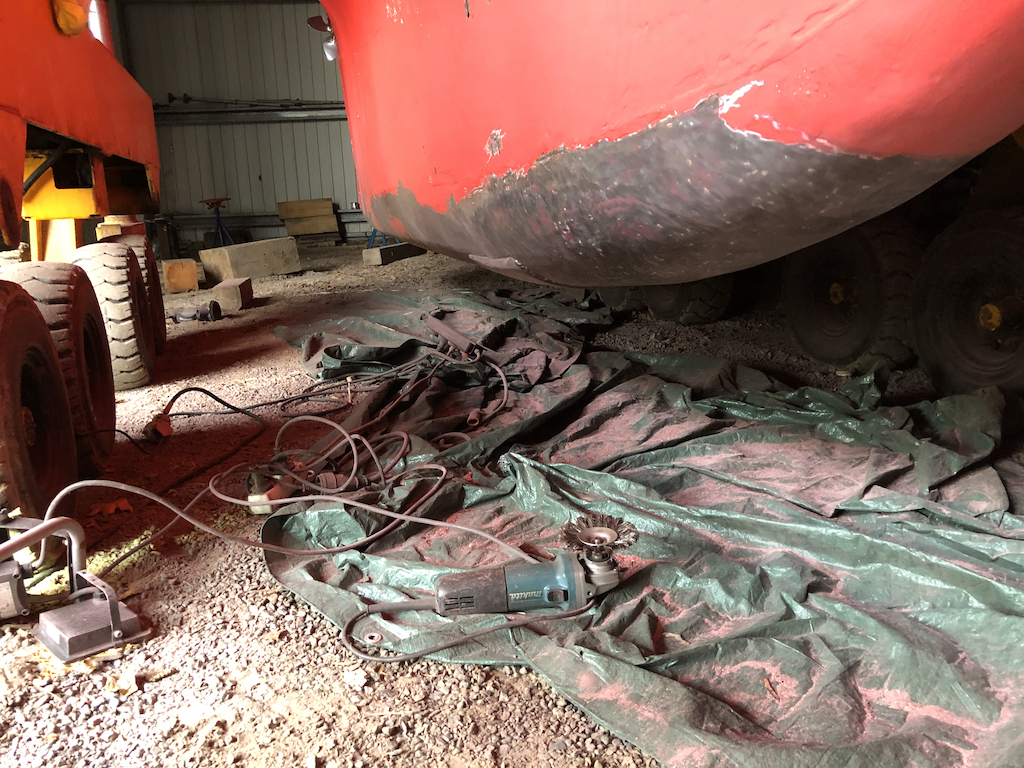
When the Ariadne was launched in the spring, one of the shipyard workers threw in the idea of leaving Ariadne on the wagon for the weekend to get the bottom of the keel cleaned in autumn. Namely, it needed at least the removal of numerous layers of paint, as it has always seemed to be out of reach of refurbishment.
Ariadne got up almost immediately after arriving to the boatyard, that is, the next day suitably just before the weekend. In the afternoon, after washing the bottom, Ariadne was moved into the hall in the forklift for the weekend and I was mentally preparing for the upcoming slightly more riotous paint removal contract. On Saturday morning, I packed my tarpaulin to recover the loose paint, Makita’s rattles and matching thick steel brush discs, a few scrapers and a proper respirator and rake for the dock.
There is nothing wrong with a long keeled boat when you compare it to a modern one, except for the length of the keel. The length of the Ariadne keel is probably around 4-5 meters. I removed all the paint and zinc coating from under the keel and about 20-30cm upwards on both sides. For the most part, the old 1960s coating sat pretty well and a healthy steel surface was exposed underneath. However, the underside of the keel had suffered the most and a few dents said Ariadne had also received a few ground contacts at some point. I brushed the rust from the bottom with a rag and my feeling turned out to be right because a drop appeared at one point. I swept it away and it was replaced by another. Yep, water. And it comes out from inside the boat ……… Where is this hole? At a deep point between the water tank and the final tank, the bilge. I removed everything from the spot and a little more and completely round hole in the center line of the keel was revealed. Looks like a drilled hole. Strange. I continued with a wire brush to clean the underside of the keel, and I reached the underside of fuel tank part. It had one dent and when it was cleaned, one spot became wet. I knew this….. I continued cleaning a little further back because I didn’t want a hole in the fuel tank when there were still a few hundred liters of fuel inside. After cleaning the entire underside of the keel from paint and other loose material, I dug out the thickness gauge and measured the thickness of the material all the way and densely enough. At the beginning of the keel, the material thickness was initially 6.0 mm and after one seam shortly before the fuel tank the thickness was 5.0 mm. So the spring renovation has already started and the launch before midsummer seems possible, maybe even probable.
